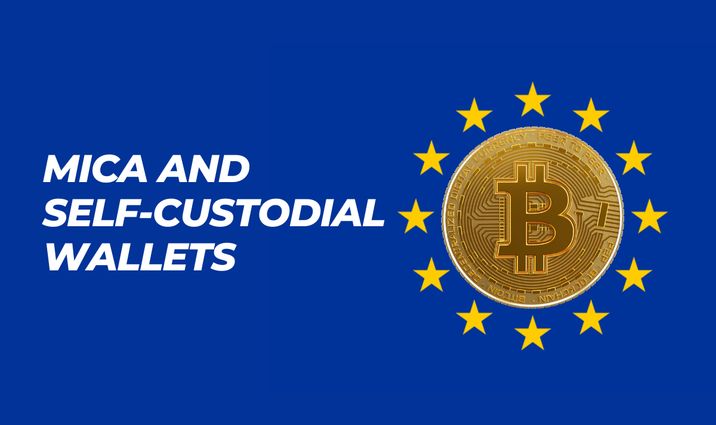How MiCA impacts self-custodial wallets in the EU

On March 3, 2025, Binance announced the delisting of USDT, FDUSD, TUSD, USDP, DAI, AEUR, XUSD, and PAXG for users in the European Economic Area (EEA) because they are not compliant with MiCA rules. As a result, users had to convert any remaining stablecoins that did not comply with MiCA (e.g., USDT) to USDC, EURI, or EUR. Moreover, MiCA regularly faces criticism for hindering EU crypto competitiveness and contradicting crypto ideology. In this article, we will discuss what MiCA is and how it impacts your assets in Europe.
What is MiCA?
The Markets in Crypto-Assets Regulation (MiCA) is a set of rules and laws that regulates crypto-assets in Europe.
This framework was proposed by the European Union (EU) in 2023. MiCA consists of several rule packages that entered into force progressively. In May 2024, the European Banking Authority (EBA) published final draft regulatory (RTS) and implementing (ITS) technical standards under MiCA, which will apply from 30 June 2024.
These include three main categories of crypto-assets:
- Stablecoins, including token-referenced assets (e.g., Diem by Meta) and electronic money tokens (e.g., USDT, USDC, and EURT).
- Utility tokens that provide access to products and services within a specific project's ecosystem. They are not intended for investment or use as a means of payment. For example, BNB (Binance Coin) for reducing fees and MATIC (Polygon) for paying fees in the Polygon network.
- Other crypto-assets, such as NFTs or DeFi tokens, that are not covered by existing European financial regulations.
How exactly does MiCA regulate the crypto market?
MiCA regulates the EU crypto market in a way similar to traditional finance — through licensing, transaction transparency, and clearly defined areas of responsibility. Here are some of the specific measures that MiCA uses:
1. Licenses for CASPs
Crypto-Asset Service Providers (CASPs) are exchanges, custodial wallets, brokers, and similar service providers. Under MiCA requirements, they have to get a license from one of the EU countries, have a physical presence in the EU territory, and comply with security, corporate governance, and anti-money laundering (AML) standards.
2. Mandatory publication of a white paper
A white paper is a technical document containing detailed information about a particular crypto project. Utility tokens and stablecoins have to publish a detailed white paper, disclose the risks, the business model, and the project team.
3. Enhanced Regulation of Stablecoins (ARTs and EMTs)
Stablecoin issuers must maintain 1:1 reserve assets, undergo regular audits, publish reports, and obtain approval from the European Banking Authority (EBA).
4. Consumer protection
Companies have to clearly explain risks to their users, set up dispute resolution mechanisms, avoid misleading marketing, and take responsibility for losses caused by their own mistakes or negligence. They must also avoid misleading market participants.
What does it mean for crypto market participants?
On the one hand, MiCA helps provide more transparent crypto activity in the EU and aims to ensure the protection of consumer rights. On the other hand, MiCA is also seen as part of the government's attempts to regulate or influence decentralized technologies, especially those that can compete with traditional finance.
To begin with, exchanges and wallets will face more regulatory complexity and financial costs. They’ll also encounter ideological tensions, as the core idea of crypto is to build a free, decentralized economy powered by modern technologies.
Some exchanges have introduced new requirements for crypto withdrawals and deposits. For example, Bitstamp has already followed the Travel Rule. This is a regulatory standard under MiCA that requires Crypto Asset Service Providers (CASPs) to collect and share sender and recipient information for certain crypto transactions that involve EU citizens.
In this case, it means that you, as a user of an exchange or a custodial wallet, have to provide information related to your withdrawals and deposits and verify ownership of your self-custody wallets (only for withdrawals and deposits over €1,000).
Another recent example is Binance delisting stablecoin trading pairs that don’t comply with MiCA for users in the European Economic Area (EEA). The affected assets included USDT, FDUSD, TUSD, USDP, DAI, AEUR, XUSD, and PAXG.
What does it mean for Coin Wallet users?
As we said earlier, MiCA primarily targets crypto-asset service providers (CASPs), such as exchanges, brokers, and custodial wallets, because they fall under the definition of CASPs.
Coin Wallet is a self-custodial (also known as non-custodial) wallet, and self-custodial wallets, in essence, don't save any information and act as tools. It means it doesn't fall under MiCA regulation because users retain full control over their private keys. However, there are a few nuances, as expected.
The EU has been working on improving MiCA, with periodic discussions about potential regulation of self-custodial wallets.